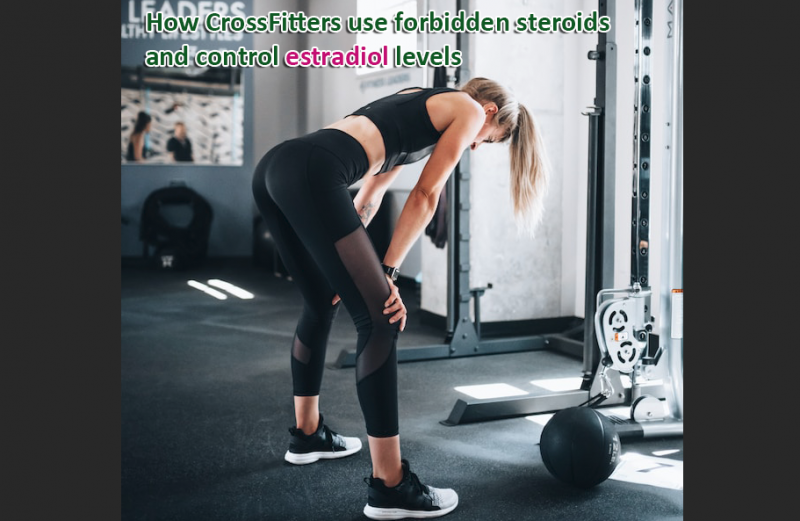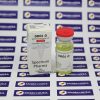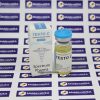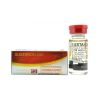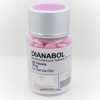Part 1: The Use of Forbidden Steroids to Enhance Performance in CrossFit
The competitive nature of CrossFit can lead some athletes to use forbidden steroids in an attempt to gain an edge over their competitors. In this part of the article, we will explore the reasons behind this behavior, provide examples of CrossFit athletes who have used steroids, and discuss the potential risks associated with steroid use. Athletes may turn to anabolic steroids, synthetic substances that resemble the male hormone testosterone, to enhance muscle growth, increase strength, and improve recovery time. These performance-enhancing properties can be particularly appealing to those looking to outperform others in CrossFit competitions.
Several CrossFit athletes have been caught using steroids and subsequently faced disciplinary actions. For instance, in 2017, CrossFit Games competitor Ricky Garard was disqualified and banned from the sport for four years after testing positive for banned substances, including anabolic steroids. Another example is Natalie Newhart, a former CrossFit Games competitor, who received a two-year suspension in 2016 after testing positive for a banned substance.
However, the use of forbidden steroids in CrossFit carries significant risks. Short-term side effects may include acne, mood swings, aggressive behavior, and sleep disturbances. Long-term effects can be more severe, including liver damage, cardiovascular issues, hormonal imbalances, and an increased risk of certain cancers. Furthermore, using steroids is a violation of the ethical principles of fair competition. CrossFit has established rules and regulations to ensure a level playing field for all athletes. Using forbidden substances to gain an unfair advantage undermines the spirit of the sport and discredits the hard work and dedication of other competitors.
While the use of forbidden steroids may provide some athletes with a temporary performance boost, the potential health risks and ethical implications far outweigh the perceived benefits. It is essential to promote a culture of clean competition and educate CrossFitters on the dangers of using such substances, emphasizing the importance of achieving success through hard work, dedication, and perseverance.
Part 2: How CrossFitters Control Their Estradiol Levels During an AAS Cycle
In this part of the article, we will discuss how CrossFitters who use anabolic-androgenic steroids (AAS) control their estradiol levels to minimize potential side effects and optimize their performance. Estradiol is a form of estrogen, the primary female sex hormone, which can increase in the body due to the conversion of testosterone through a process called aromatization. Elevated estradiol levels can lead to side effects such as water retention, gynecomastia (the development of breast tissue in males), and mood swings.
- Aromatase Inhibitors (AIs): CrossFitters who use AAS may employ aromatase inhibitors to control their estradiol levels. AIs work by blocking the enzyme aromatase, which is responsible for converting testosterone to estrogen. By inhibiting this conversion, AIs can effectively reduce estradiol levels in the body. Common AIs used by athletes include anastrozole (Arimidex), letrozole (Femara), and exemestane (Aromasin).
- Selective Estrogen Receptor Modulators (SERMs): Another approach to controlling estradiol levels is through the use of selective estrogen receptor modulators (SERMs). SERMs work differently than AIs; they do not block the production of estrogen but instead bind to estrogen receptors in specific tissues, preventing estrogen from exerting its effects. This can help mitigate some of the side effects associated with elevated estradiol levels. Popular SERMs used by athletes include tamoxifen (Nolvadex) and clomiphene (Clomid).
- Regular Blood Tests: To ensure that their estradiol levels are within an acceptable range, CrossFitters using AAS may undergo regular blood tests. Monitoring hormone levels through blood tests can help athletes make informed decisions about adjusting their AI or SERM dosages to maintain a balance between optimal performance and minimizing side effects.
- Proper AAS Dosage and Cycle Length: By carefully planning their AAS dosage and cycle length, CrossFitters can also minimize the risk of elevated estradiol levels. Lower doses and shorter cycles are generally associated with a reduced risk of excessive aromatization and subsequent estrogenic side effects.
CrossFitters who use anabolic-androgenic steroids must take proactive measures to control their estradiol levels and minimize potential side effects. This can be achieved through the use of aromatase inhibitors, selective estrogen receptor modulators, regular blood tests, and careful planning of AAS dosage and cycle length. However, it is important to emphasize that the best way to avoid these risks is by abstaining from the use of forbidden substances and focusing on natural methods to improve performance.
Conclusion
In conclusion, the use of forbidden steroids among CrossFitters to enhance performance presents significant risks to their health and the integrity of the sport. As we have seen, there are various methods that athletes employ to control their estradiol levels while using anabolic-androgenic steroids, including the use of aromatase inhibitors, selective estrogen receptor modulators, regular blood tests, and carefully planned AAS dosage and cycle lengths. However, these tactics do not eliminate the inherent risks and ethical concerns associated with steroid use. The best tactics for controlling estradiol levels in CrossFitters are those that focus on promoting a healthy, natural approach to training and performance enhancement:
- Balanced Nutrition: Ensuring a balanced diet that includes an appropriate mix of macronutrients (protein, carbohydrates, and fats) and micronutrients (vitamins and minerals) can support hormonal balance and overall health.
- Regular Exercise: Engaging in a well-rounded exercise program that incorporates strength training, cardiovascular workouts, and flexibility exercises can contribute to maintaining healthy hormone levels and minimizing imbalances.
- Stress Management: Chronic stress can negatively impact hormone balance, so incorporating stress-reduction techniques, such as mindfulness practices, meditation, or yoga, can be beneficial in maintaining hormonal equilibrium.
- Sleep Optimization: Prioritizing quality sleep and maintaining consistent sleep patterns can contribute to optimal hormone production and regulation.
- Natural Supplements: Some athletes may consider using natural supplements, such as vitamins, minerals, or herbal remedies, to support hormonal balance. However, it is essential to consult with a healthcare professional before beginning any supplementation regimen to ensure its safety and effectiveness.
By promoting a culture of clean competition and emphasizing the importance of achieving success through hard work, dedication, and perseverance, we can work towards eliminating the use of forbidden substances in CrossFit. Encouraging athletes to focus on natural methods of performance enhancement, such as balanced nutrition, regular exercise, stress management, sleep optimization, and appropriate supplementation, will contribute to a healthier and more equitable sporting environment.

